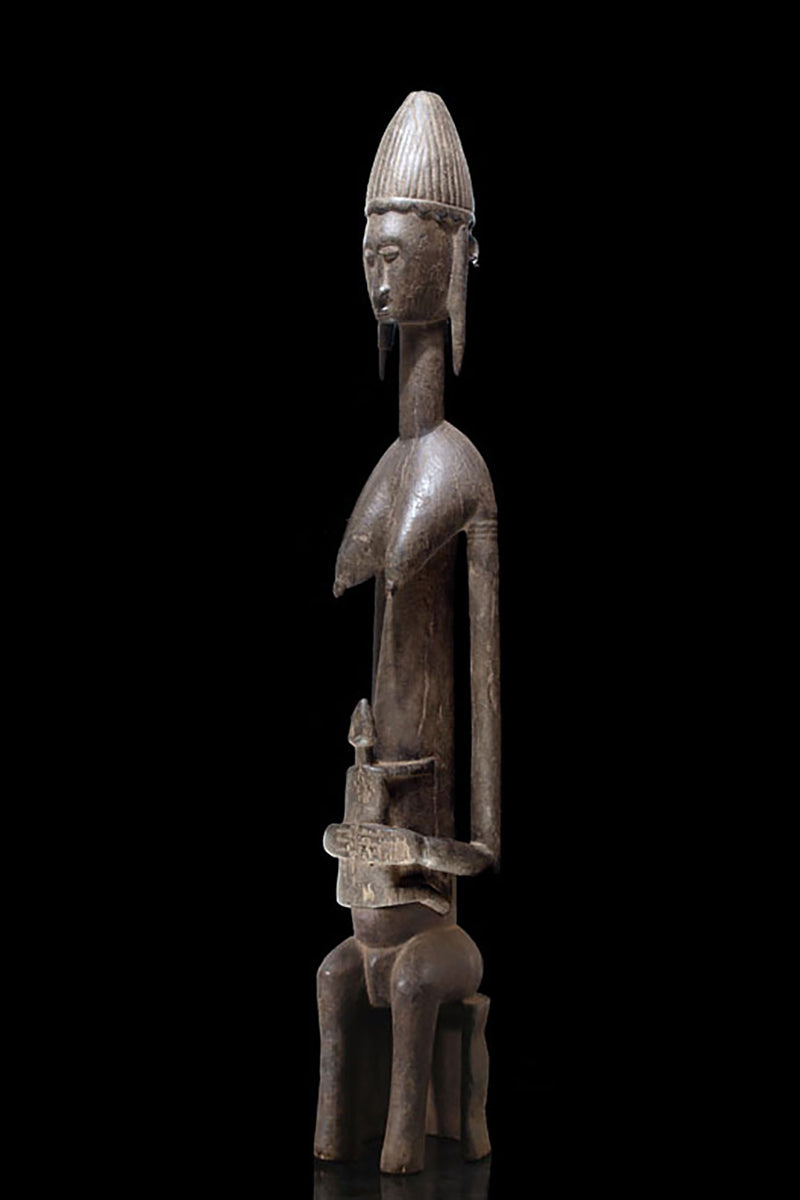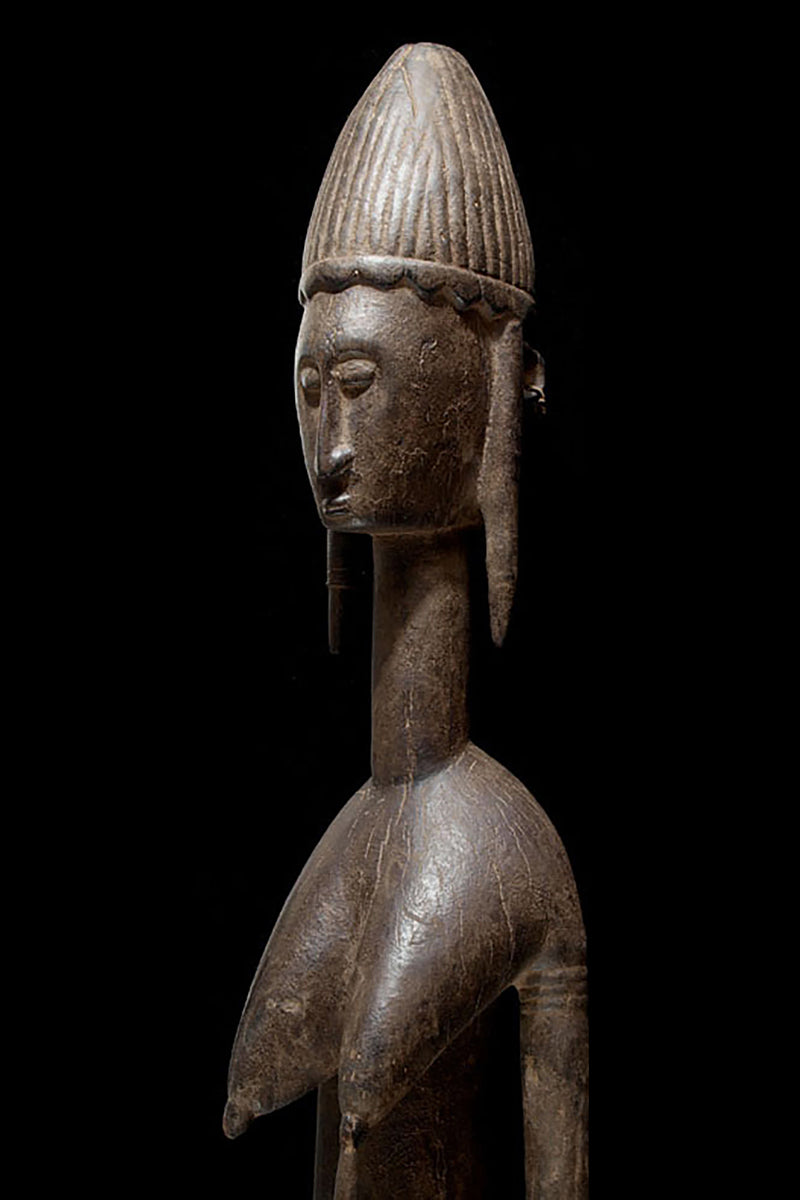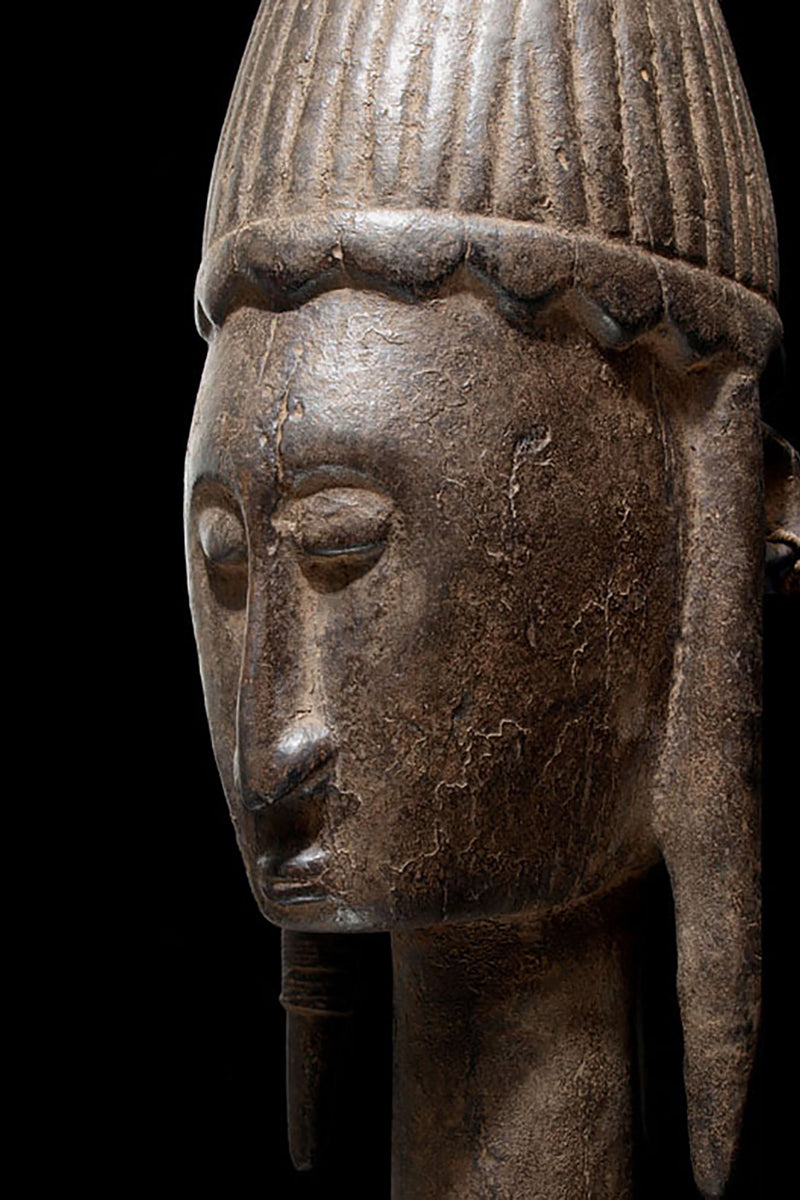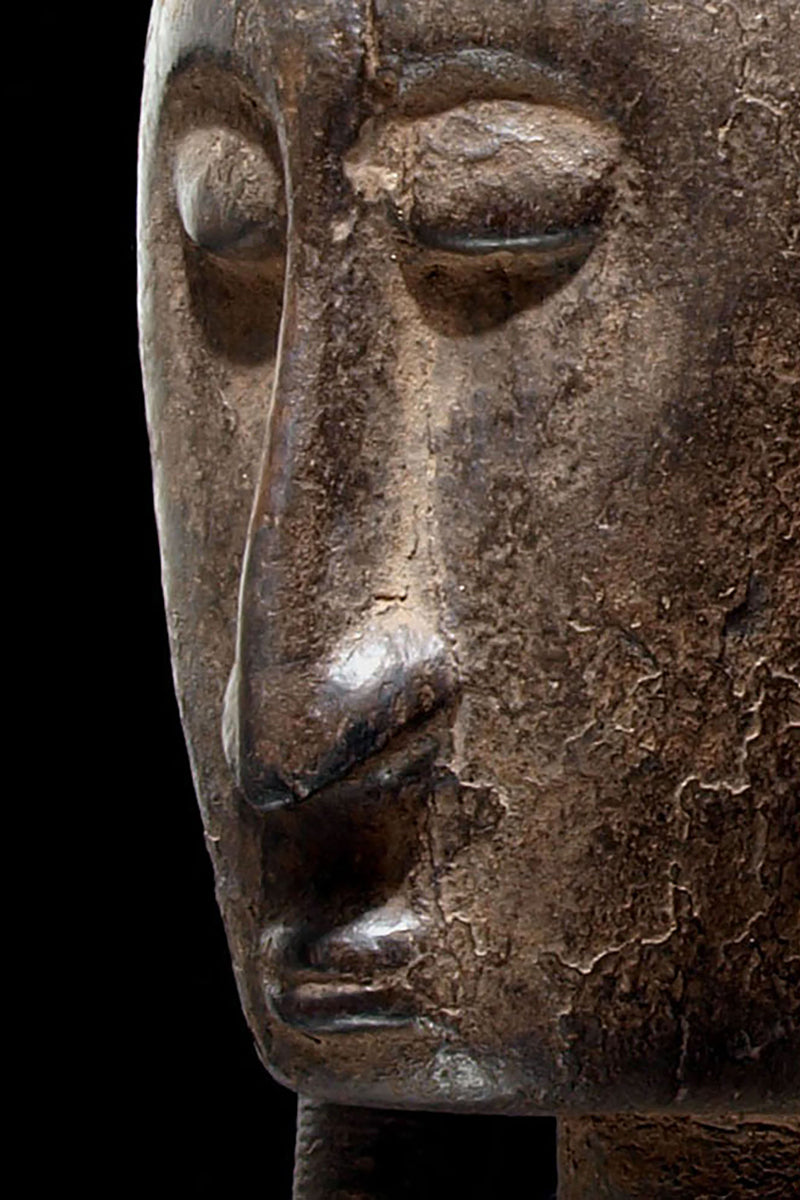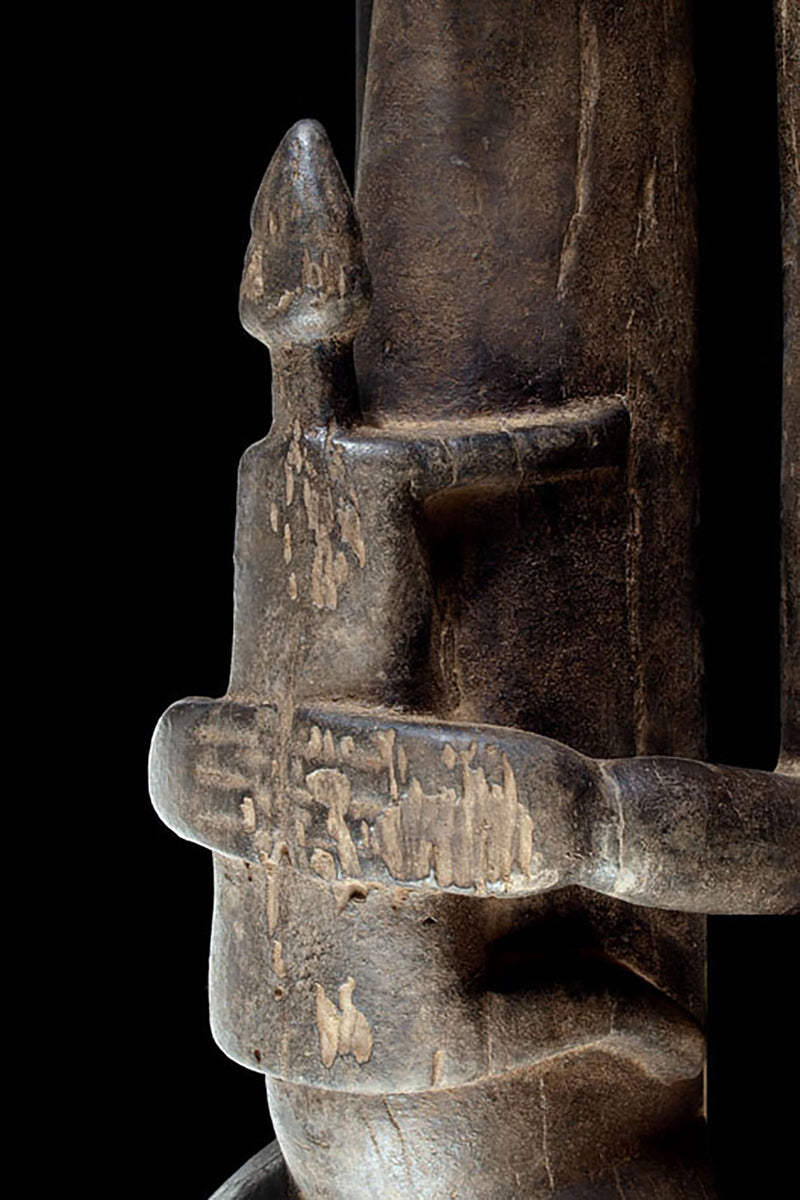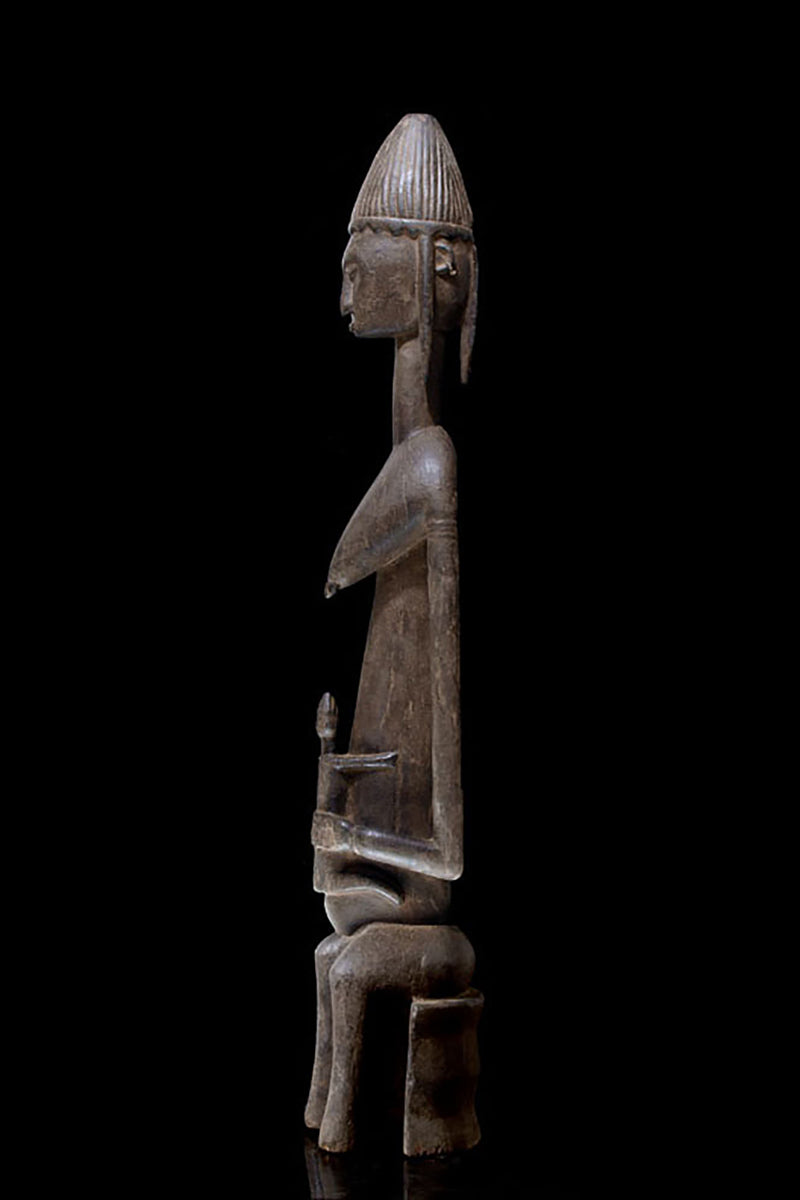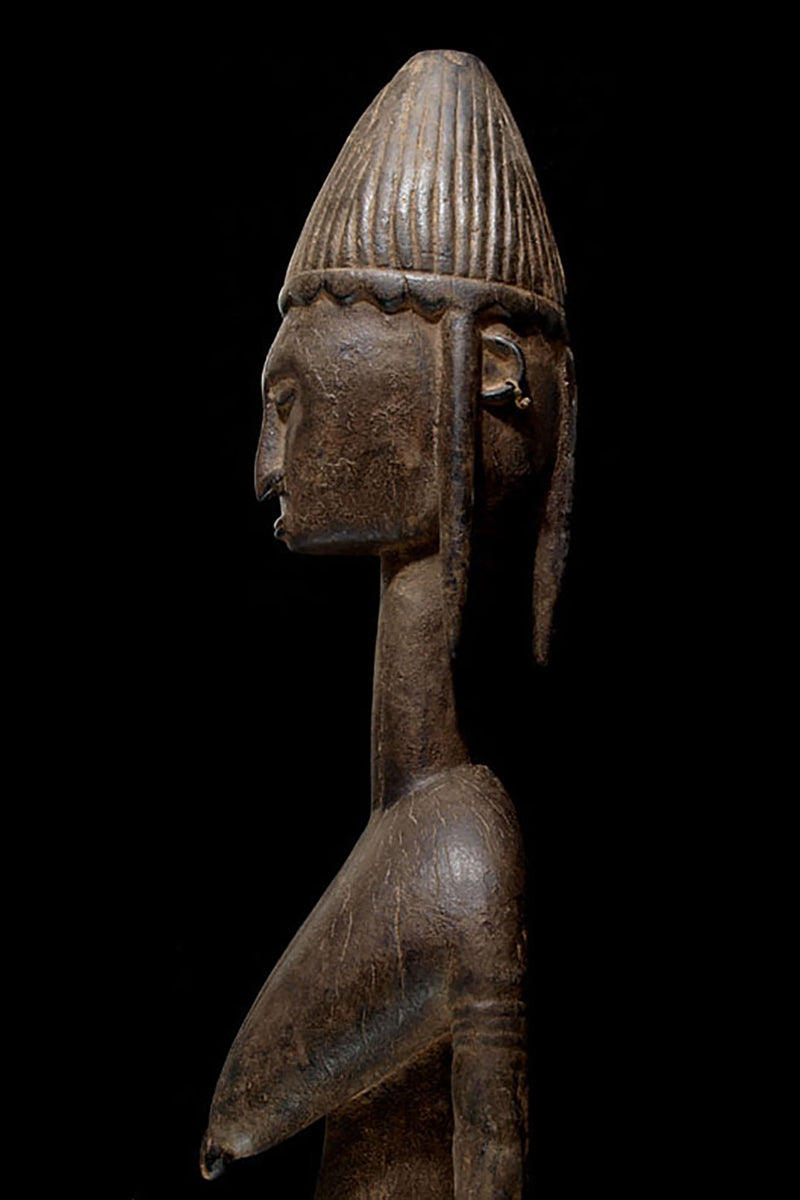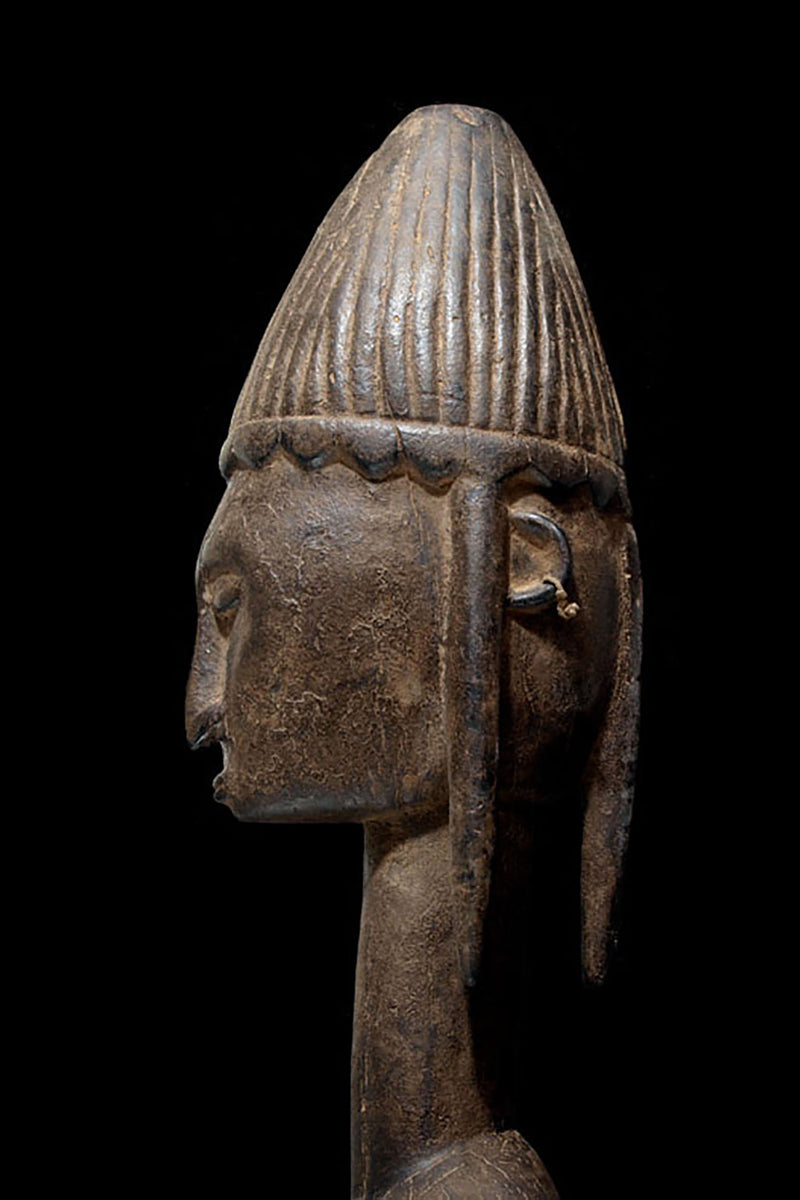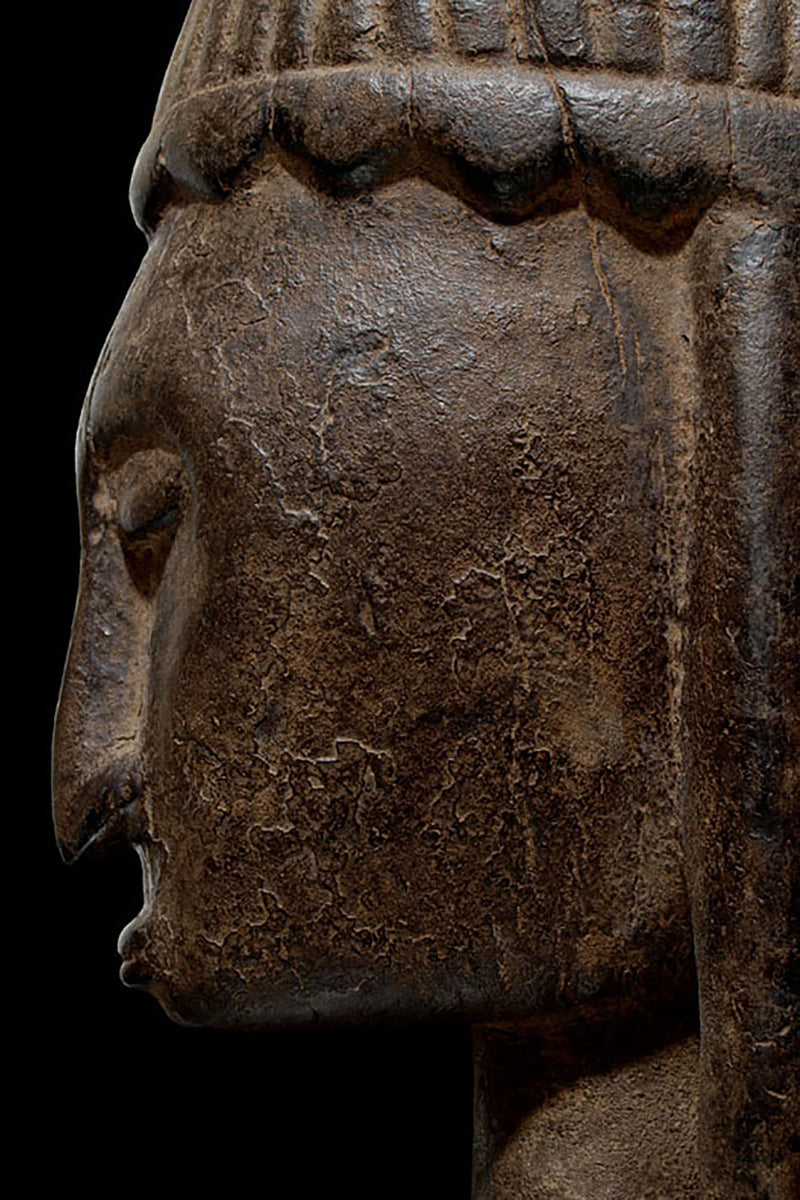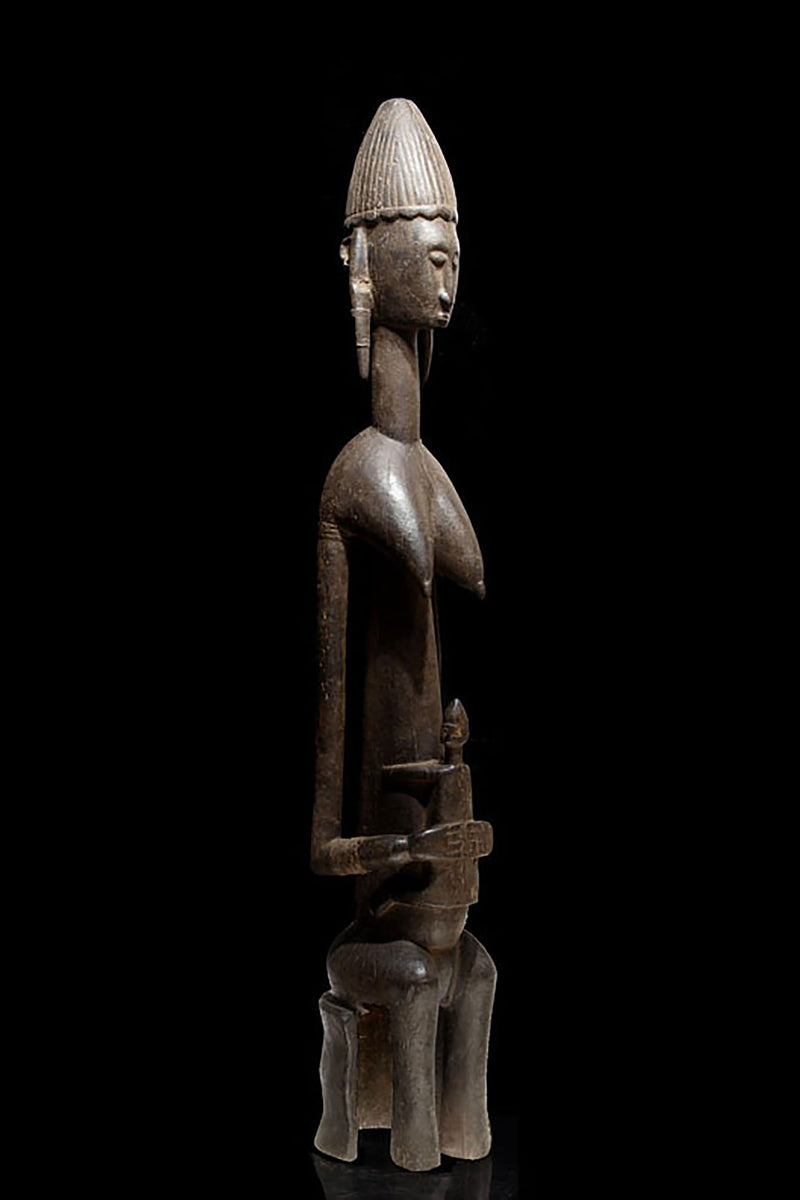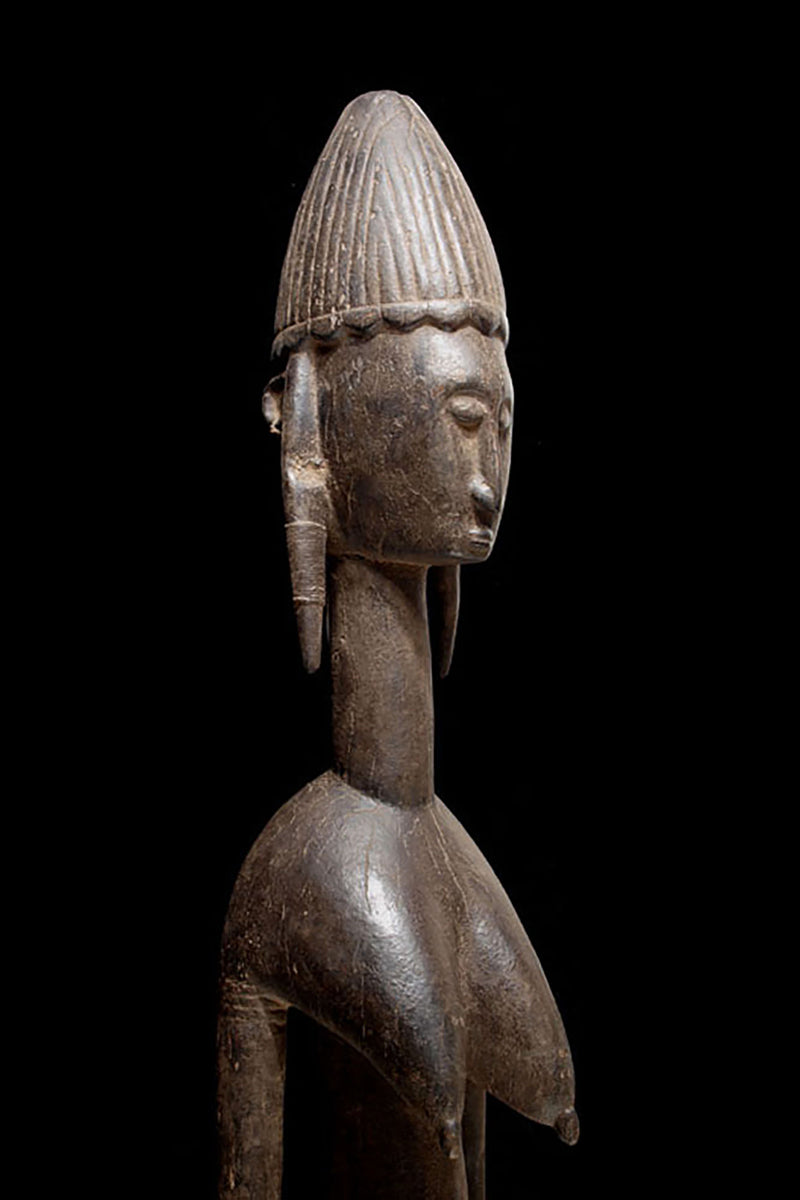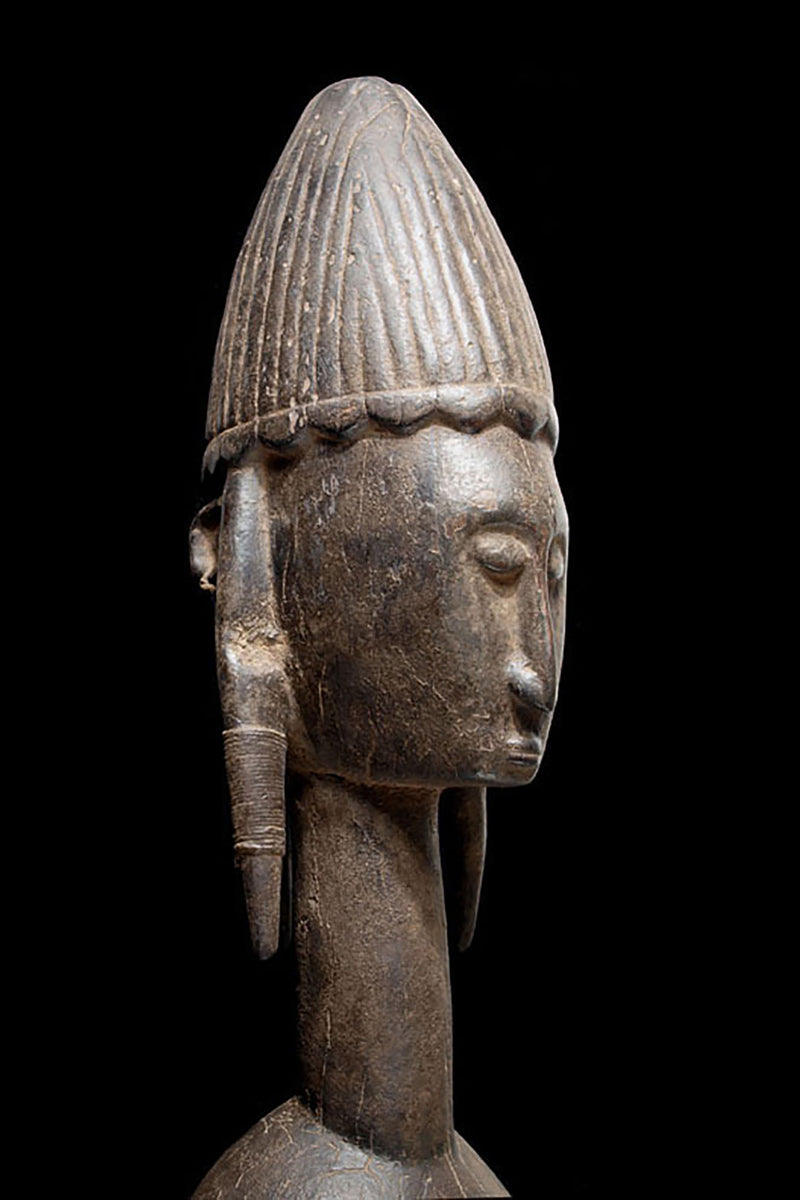Galerie Wolfgang Jaenicke
A Bamana maternity, Gwandusu
A Bamana maternity, Gwandusu
Couldn't load pickup availability
A Bamana maternity, Gwandusu, seated on a stool, the slender torso with a child in front of the abdomen, hanging conical breasts bneath rounded shoulders, an elongated neck supporting the oval head with a caplike coiffure, the hair dressed as three tresses, heavy hard wood, dark glossy patina, collected in one of the villages close to Dioila, Mali.
When Bamana sculptures of dignified men and women first appeared in Westren collections in the 1950sthe female figures were to as "Queens". They all came from the villages near Dioila and Bougouni in the region of the Baoule river before it joins the Bagoe to form the Bami, a tributary of the Niger river, but none arrived with any documentation (Kate Ezra, A Human Ideal in African Art. Bamana Figurative Sculpture (New York, 1986) Youssouf Tata Cissé ( Arts d´ Afrique, Paris 2000, p.15) told us, that the female figures represent the goddess of water and the primordial mother and that the groups were displayed every seven years in relevant ceremonies. In the years after 1950 till the beginning of the 1960s most of the Bamana Jo sculptures were stolen from the fields. It is more or less unknown how the cult of the Jo/Gwan society is practicing their knowledge nowdays. The last important fieldworks in the Bamana Region are done by Kate Ezra and Sarah Brett-Smith more than twenty years ago. A wellknown Parisian Tribal Art dealer told me, that the Jo statuettes, which were placed on the fields, and which have a special weathered patina, doesn´t exist anymore in the Bamana region. Only the statues, which were protected in the huts of the villages have "survived". They have a different patina, they are extremly rare but sometimes it is possible to find one of this authentic big Bamana-statues.
About dating of the Bamana Figurative Sculpture
"some Bamana carvers today still produce sculpture in the style of nyeleni figures. Others can recall clearly the last time they were commissioned to make nyeleni or sonkalani figures, generally sometime in the 1960s. On contrast, elders in the villages that once had Jo and Gwan figures expressed doubt that carvers today are capable of creating works as beautiful and complicated as their sculptures. Most said their had acquired the Jo and Gwan sculptures before they were born. Since many of these men were in their sixties or seventies when questioned in 1978, their sculptures could have been made in the late ninteenth or early twentieth century. Such a date would correspondence well to the generally accepted view that African wood have little chance of surviving the harsh environmental conditions to which it is exposed." Kate Ezra, A Human Ideal in Africa, Bamana Figurative Sculpture, Washington 1986.
In contrary of Kate Ezra nowadays (2009) nearly each type of Bamana sculpture - also Jo and Gwandusu-Figures - are reproduced by the skill of local carvers. But probably there are two big differnces. 1. The choice of the bumbu-wood, which afford a high degree of knowledge for such a large sculpture, which doesn´t show any significant agecracks. 2. The specific patina, which is - according of Daba Diarra - protecting these sculptures against insects and erosion, which "would have little chance of surviving the harsh environmental conditions to which it is exposed." Kate Ezra. I have never seen a recent "Gwansusu or Jo-Sculpture" with a similar, encrusted patina of may layers, which probably takes decades of sacrifucation-rituals.
The circumstances about the discovery of this Gwandusu-sculpture is documented in a HD video-film in Bambara, translated in French.
Height: 138 cm
Weight: 12,4 kg













